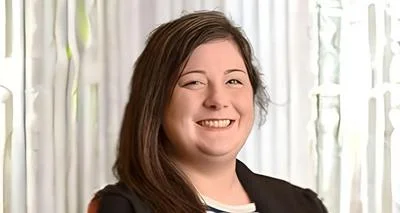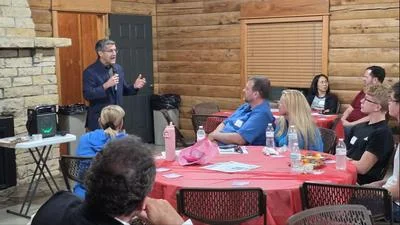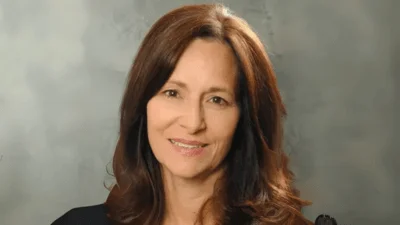McLean County Behavioral Health Coordinating Council met Oct. 14.
Here are the minutes provided by the council:
The Behavioral Health Coordinating Council Committee met on Friday, October 14, 2022, at 7:30 a.m. in Room 400 of the Government Center, 115 East Washington Street, Bloomington, IL.
Members Present: Chairman John McIntyre; Sonja Reece, McLean County Board of Health; Mark Jontry, Regional Office of Education; Judge Rebecca Foley; Susan Schafer, McLean County Board; Brian Wipperman, Marcfirst; Lynn Fulton, OSF St. Joseph Medical Center; Colleen O’Connor, NAMI Executive Director (Livingston, McLean County); Stephanie Barisch, Center for Youth and Family Solutions; Kevin McCarthy, Town of Normal; Lisa Thompson, Project Oz Executive Director; David Taylor, Executive Director of United Way, Diane Schultz, The Baby Fold; Donna Boelen, City of Bloomington; Matt Mollenhauer, Chestnut Chief Clinical Officer
Members Absent: Colleen Kannaday, Carle BroMenn; Lynn Fulton, OSF St. Joseph Medical Center; Eric Thome, State Farm, Jeremy Hayes Bloomington Housing Authority Executive Director; Brian Wipperman Marcfirst CEO, Chris Workman PATH Executive Director; Kristin Adams, Country Financial; Joan Hartman, Center for Human Services Executive Director; David Sharar Chestnut Health Systems CEO, Elizabeth Robb
Staff Present: Ms. Cassy Taylor, County Administrator; Kevin McCall Behavioral Health Coordinating Council Supervisor; Amanda Hartley; Recording Secretary
Others Present: Cory Tello, Shannon Garlock, Amy Hancock, Natasha Caudle, Kathleen Lorenz
Chairman John McIntyre called the called to order at 7:30AM.
Chairman McIntyre presented the minutes from the September 9, 2022, regular meeting for approval
Motion by Jontry/Foley to approve minutes from September 9, 2022
Chairman McIntyre welcomed Ms. Malott. Trisha gave an update on the Bridge Academy. Bridge Academy serves adolescents in 7-12th grade who are at risk of hospitalization, experiencing internalizing mental health concerns, exceeding what their referring school can support, returning from hospitalization, or exceeding a lot of crisis services. They have 10 current students with 1 starting on Monday and 2 pending referrals. The larger districts are still working through who and how they are going to refer. They anticipate an influx of referrals in the near future. They have started to pick up in the last week. Ms. Malott stated that one of the biggest pieces of success that she has seen so far is attendance. Attendance is one of the pieces of data that they are looking at. Currently the student’s average attendance is at 66 percent. Most of the students are coming almost every day. Ms. Malott stated that all of the students have completed a GAD-7 and a PHQ to access for mental health concerns in a variety of areas and the students have goals and objectives tied to the GAD-7 and PHQ as well as attendance. Academic goals are tied to observations by their teachers. Ms. Malott shared something a student wrote in their newsletter regarding their positive experience at Bridge Academy. Today marks the end of their 4th week of classes. At their 30 day point they will be reassessing the students GAD-7 and PHQ to determine if any new goals need to be set for the students.
Chairman McIntyre asked if anyone had any questions for Ms. Malott
Mr. McCall asked about what the capacity would be Bridge Academy in the next year or two with the current staffing model. Ms. Malott stated that with the current staffing model they could have up to 36 students but will depend on the dynamic of the students and their level of need. They could accommodate up to 12 in a classroom. They are looking to hire another teacher to increase their capacity further.
Ms. Schultz stated that this a big step for our county. She stated that they have a program that serves high need kids and wanted to reiterate that this is in no way a competitive environment and that these kids are a unique niche group of kids that have been underserved for so long. Once the bigger districts get their referring protocols in place the referrals will increase, and the demand will be high.
Ms. Reece asked how we prepare teachers for this very special area and what we need to address in our education of teacher. Ms. Malott stated that what Ms. Reece was asking and addressing points towards another piece of big systemic change that needs to occur beyond just local teachers and local educator programs. Teachers are taught how to teach and content relative to what their planning to teach but are not always taught how to address student mental health or what happens when a student has a crisis. Some things that we can do locally is push Mental Health First Aid for Youth and having school staff and educators go through the training is a big piece of what could help. Ms. Malott stated that they had all their staff do the training. They hope to eventually bring student teachers in and also have co teaching models for periods of time with existing teachers so that they learn what they are doing and see their approach and take it back to their districts.
Mr. Jontry stated that they will provide opportunities for this group to come and see the program. A formal open house won’t occur until the 2nd semester.
Ms. Barisch asked about the anticipated length of stay that the students will be in the Bridge Academy and also is Bridge Academy working to connect kids with outside community providers so that when they do move back to the school there is a team around them. Ms. Malott stated that 60 days is the minimum amount of time a student will be at the Bridge Academy. The current students have all shown improvement but will not be ready to return to their referring schools at day 60. The referring districts would prefer that the students return at a semester break point, and they are taking that into account. Getting the students connected to outside resources is one of the things that the Bridge Academy intends to do. Many of the students are already connected to SASS and many of them have an established relationship with a prescriber. Several of them have existing therapeutic relationships with someone. They will be making referrals and making connections based on individual need. They will also be taking into consideration family insurance and where they are living.
Ms. O’Connor asked about parents whose children are struggling in their school and would be a good candidate for the Bridge Academy what would be the best way for them to move forward. Ms. Malott stated that it is recommended that the parents reach out to the school. The process has to originate with the school that their child is currently enrolled in. They can’t except them without the district referral.
Mr. McCarthy asked about an update on the current teaching staff. He asked if they were social workers, special ed teachers, and dual credited. Ms. Malott stated that their therapist is an LCPC who has had years of experience with students in the school environment and outreach. She is already known to most of the schools. They have 2 case managers one is a social worker, and one has her undergraduate degree in math but spent years in the guidance office at one of the junior highs and facilitated their healing circles. One of the teachers was a teaching assistant at Hammitt School and previously taught high school Physics in a public school. They have another teacher who taught junior high for the majority of her career, so she is the junior high home room teacher and also teaches their stem work. They also have a special ed teacher who is currently teaching humanities and addressing any of the resource time or additional special ed support for the students with IEP’s.
Ms. Reece suggested adding a teacher as a member of BHCC. Mr. Jontry stated that due to the time that the meetings take place for BHCC it would conflict with the school schedule.
Ms. Barisch spoke about the new Pathways to Success program that the state is launching. It is the response to a lawsuit called N.B. that was against the state of Illinois for not having a robust system of care for youth with complex mental health needs and Pathways to Success is the state’s plan to address the state’s needs. It is a program for youth that are Medicaid eligible with complex behavioral health challenges and who are struggling with symptoms or behaviors that are impacting multiple areas of functioning. Pathways is built upon an intensive care coordination and wrap around models to help coordinate the care of youth and has the potential to bring new services to the arena. It is guided on system of care principles that put children and families at the center of planning for their own services and needs. It is community based at times that are available for families and the services are designed to be where they are convenient for them. The key around systems of care models is that families and youth have leadership in not only their own case but in the model all together and the services that occur. There are specific strategies for mentoring and training. There is potential support and participation in family leadership counsels for families and there are specific strategies for evaluating their engagement in the process and outcome.
Ms. Barisch spoke about what the success of being in the program looks like for children and families. It will improve family functioning and reduce caregiver stress, create a more stable living situation for children and youth, improve school attendance and performance, increase family and youth involvement in services, increase use of evidence-based practices, and reduce contacts with law enforcement and child welfare as well as the emergency response team and crisis response teams.
To be eligible for Pathways to Success a youth must be Medicaid eligible, under the age of 21, and also demonstrate a need for intensive services pursuant to the state’s IM+CANS decision support criteria. IM+CANS stands for Illinois Medicaid Comprehensive Assessment and Strengths. It is a communimetric tool that helps rate students and youth and adults as well on various areas such as symptoms, functioning, risk factors and strengths. The ratings are to be utilized to develop a treatment plan. The state’s vision is that the IM+CANS would be a single document per consumer that all providers that are providing services to that consumer will be working of and includes all of the services and treatments and supports that the youth and family may need. Youth who are served by a Medicaid provider have an IM+CANS completed at the beginning of their treatment. The IM+CANS will be submitted to an IM+CANS portal and the state will provide an alga rhythm to all submitted IM+CANS monthly. Youth who become eligible for Pathways under the IM+CANS will be grouped into one of two Tiers. Tier1 is the highest need tier (high fidelity wraparound and Tier 2 is a step down (intensive care coordination). Eligibility is automatically given in six month increments because that is how long the IM+CANS is a valid assessment and treatment plan.
Ms. Barisch spoke about the services that Pathways to Success will provide. They will be providing Care Coordination and Support. The youth will be assigned to a care coordination and support organization. The organization will be responsible for the care coordination and mobile crisis response services. They will also provide Family Peer Support which is designed to be provided by parents/someone with lived experience caring for youth with mental health issues who have had to navigate the system before and can help the family with the process. Intensive Home-Based services is another service provided by Pathways. They also provide Respite Services, Therapeutic Mentoring, and Therapeutic Support Services. Ms. Barisch stated that locally they are the CCSO for Livingston, McLean, and Dewitt. They are the entity responsible for the SASS mobile crisis response for Medicaid eligible youth and for the care coordination part of Pathways for all three counties. They have partnered with the local providers that are already providing the mobile crisis and SASS response in DeWitt and Livingston County. They have maintained their partnership with Center for Human Services to be the primary mobile crisis response provider for adults in McLean County. Families can expect that the Care Coordinator will listen to them and help them to create a family crisis prevention and safety plan, so they know what to do if a crisis happens. They will help them build a child and family individualized care plan and provide information to help them make informed decisions about local providers that they will work with. There will be frequent contact with families to help them in meeting their goals. Every child and family are different, and each have their own unique needs. Pathways to Success is designed to connect each family with the right amount of support at the right time.
The Child and Family team is a defined group of people that are brought together to help support a youth. It can include formal supports such as an individual from the school system or a therapist. It can also include natural supports such as a grandma, a neighbor, or a coach. It is individuals that a family wants included in their child and family team. The only person that is required to be part of the Child and Family team is the Care Coordinator. There are expectations if the youth has had a mobile crisis event that the mobile crisis be engaged as well for a brief time period. The Child and Family team is where the IM+CANS is reviewed and updated, and the treatment plan is created. The Child and Family team work together to build a plan to meet their goals and consider all of the services and supports that the family needs.
Ms. Barisch spoke about Pathways Intensive Home-Based Services. It is a team based model that specifically utilized a system called MAP (Managing and Adapting Practice). It is designed to be intensive, short term, and to be provided in the home. MAP looks at the commonalities across the evidenced based models and pulls out the therapeutic techniques that are in the models.
Pathways Therapeutic Mentoring is the provision of mentors for the kids. It is a mentoring relationship that allows people to spend quality time with the kids modeling positive interactions and working on developing key skills.
Pathways provides respite for parents and caregivers. It is a planned short break. It is not overnight. It allows parents and caregivers to have a break.
Pathways is required to have community coordination as well as collaboration with managed care organizations.
Chairman McIntyre asked Ms. Barisch who writes the single treatment plan. She stated that they do and that they are done in coordination in the child and family team meeting.
Ms. Taylor noted that this does meet a couple of the recommendations that our in the Mental Health Action Plan related to peer supports for youth and also a comprehensive wrap around service. She stated that she appreciated that Ms. Barisch mentioned the intersection with CAT. Ms. Taylor asked about funding for the program and Ms. Barisch stated that it is not a grant and that it is a peridium. The care coordination entities for the care coordination services will be paid a member per month rate. The funding is coming from HFS.
Ms. Schultz asked what are they anticipating for DCFS youth in care that are in traditional or home of relative setting where their mental health needs are sometimes underserved. Ms. Barisch stated that youth in care are eligible for Pathways however at this point in time asking that youth not be assigned to Pathways until they can work out some details.
Ms. Schafer asked about the IM+CANS as far as the other providers providing services and if they are going to have access to the IM+CANS. Ms. Barisch stated that they will have and that they would just need a release of information from the other agency.
Judge Foley spoke about the SAFE-T Act. The Illinois legislature passed the SAFE-T Act last year. Parts of it have been implemented as of this summer and the no cash bail goes into effect January 1, 2023. The criminal justice partners have been meeting regularly to discuss implementation of the act and one thing that has come out of it is the that the officers on the street in this community need an updated resource if they are not going to be taking someone to the jail where can they go. They know what the services are they just need to know what the exclusions are.
Mr. McCall introduced Jesse Sieger-Walls and Lisa Tomaka from TriWest to talk about the Systems of Care Grant. They both joined the meeting virtually. Mr. McCall stated that we submitted an application for the Systems of Care Grant in April of this year, and we didn’t end up getting the grant. TriWest spoke about the application submission and about how to reapproach applying for the grant next year. Ms. Topaka went over what they included in last year Systems of Care Grant. She talked about planning for 2023 and what to consider. She suggested identifying a Systems of Care Grant core team and having it be a set of individuals that would be under the number of the open meetings act by November so they can start meeting from November to December 16th to come up with a draft of the Systems of Care proposal that can be presented to the broader children’s team. Then the draft can then be worked on in the month of January with time to seek input from family and youth representatives which will look good in the application process. By March the draft proposal and budget should be finalized and ready to present to BHCC for input.
Mr. McCall stated that the finalized contract for transition of Triage services to The Center for Human Services was passed through the Executive Board and the transition take place on November 1, 2022. The existing Triage services will stay where they are currently at through the end of this year.
Mr. McCall spoke about the Behavioral Health Forum. There were a little over 300 in attendance of the forum which is a great success for it being the first time that it has been an in-person event for a few years. We have started to receive feedback on the event which will be used when planning the event for next year.
Mr. McIntyre indicated the next regular meeting is Friday December 9, 2022. He asked if there was any other business, hearing nothing he thanked everyone and adjourned the meeting at 9:06a.m.
https://www.mcleancountyil.gov/ArchiveCenter/ViewFile/Item/9310





 Alerts Sign-up
Alerts Sign-up